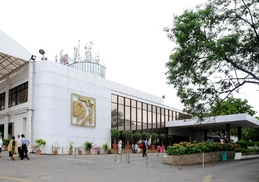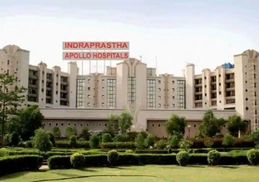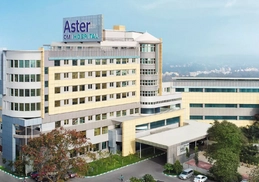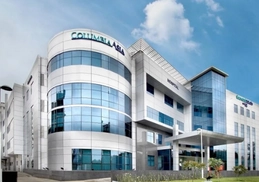
+91 8095511877

+91 8095511877
A cleft palate repair surgery helps to correct a cleft palate. A cleft palate is a developmental disorder where there is an opening in the palate, which forms the roof of the mouth.
In most babies with a cleft palate, there will be a discontinuity in lips or a cleft lip in the middle. One in every five hundred newborns has either a cleft palate or lip or both.
A cleft palate or lip can affect the normal growth of a baby. It also affects the appearance. There will be problems with feeding and, speaking as well as the development of the face.
In a baby with a cleft palate, there will be a connection between the mouth and nose. It causes the movement of the food from the mouth to the nose and also affects the speech.
A cleft palate/lip repair surgery will close the opening between the mouth and the nose. It also fixes the gap in the lips. The operation uses tissue flaps from inside the mouth and lips to close the defects. It improves the feeding ability and speech to near-normal levels.
The best time for surgery is before the baby is one year old. Early surgery helps in normal growth as well as speech.
The palate and lips develop, in the mother's womb, during the third or fourth month of pregnancy. The tissues that make them move from the sides to the center of the mouth and joins together. In a baby with cleft palate or lip, the fusion is incomplete, leaving a gap in the middle.
So a cleft palate or lip is a developmental disorder present at birth. Various genetic and environmental factors have a role in their occurrence.
They include
The first sign of a baby with a cleft lip is a gap in the middle of the lips. An examination of mouth will help to identify a cleft palate as there will be a gap in the palate.
Apart from this, a baby with a cleft palate or lip will have other symptoms as well. They include
There are three types of cleft palates
The five types of cleft lips are;
A cleft palate/ lip surgery involves the closure of the clefts or gaps in the palate and lips. It improves the appearance as well as removes the associated symptoms.
The main goals of a cleft lip surgery are
If a baby with a cleft palate and lip, it is better to do the cleft lip surgery first. The ideal time for this surgery is between two to 6 months of birth. The cleft palate surgery will follow after about six months.
In babies with only a cleft palate, the best time for correction is between nine to fifteen months of birth. They will also require additional surgeries to correct problems with the gums. It is better to do these around eight to ten years.
Cleft lip surgery aims to improve the appearance and function of the lips by closing the gap.
A baby having the surgery will have general anesthesia. The surgeon will then make incisions on both sides of the cleft to raise flaps that will have muscles, mucous membranes, and skin.
The next step is to pull the flaps over the gap and join them with absorbable sutures. The location of the surgical scar will be along the natural contours of the lips to make it less visible. These marks usually fade away after a few years.
The duration of the surgery will be two to three hours. The baby will be in the hospital for two days.
Cleft palate surgery is a complex surgery. Here, apart from closing the gap, the surgeon will have to ensure that the muscles of the soft palates are functioning correctly. Or else the baby will have difficulties with speech.
The surgeon will start by making incisions on either side of the clefts. Various techniques are available regarding how to raise flaps and close the defects. The choice of the method and flap will depend on the type of cleft.
The surgery will take around three to four hours, and the baby will be in the hospital for two to three days.
A cleft palate or lip surgery improves the appearance, speech as well as the ability to breastfeed, eat, or drink.
An increased ability to feed and eat will help the baby to grow normally.
Having the surgery in infancy can spare a baby from emotional and social discomforts. It allows the baby to grow normally in physical, emotional, and social aspects.
A cleft palate can cause repeated middle ear infections, which reduces the hearing ability. Hearing loss can also happen as a result. Repair of the cleft palate at the earliest can prevent this from occurring.
Recovery from the surgery will take two to three weeks.
It is natural for your baby to show some discomfort in the first few days. The effects of the anesthesia and the surgery will make it feel very tired. After a week or so, your baby will be back to normal.
Your baby's palms will have paddings to prevent the fingers from rubbing on the surgery wound. The incisions will heal in around two to three weeks
Once the wound heals, the baby will start sucking better while breastfeeding.
The scar from a cleft lip surgery will look pink for a few weeks.
A cleft palate/lip surgery is very safe, with lesser chances of complications. Bleeding, infections, etc. are common complications. Proper post-operative care will help to prevent these.
If the cleft in the lip is big, additional surgeries will be necessary to improve the appearance. It is better to do corrective cosmetic surgeries once the growth is complete. It will be around eighteen years in girls and twenty-one in boys.
If facial asymmetry is present after surgery, corrective surgeries at a later time will help to set it right.
Some babies may develop an opening in the palate after a few years of surgery. If this becomes a problem, additional surgery will help in closing it


This article has been reviewed for medical correctness and relevance by
Dr Faizal CP
Dr FAIZAL CP is a consultant Pedodontist also working as Professor & Head , Dept of Pediatric & Preventive Dentistry , Kannur Dental College, Kerala, India. He has more than 18 years of academic experience and has published more than 50 scientific articles in indexed journals . His areas of interest are dental traumatology , pediatric endodontics and dental materials

Juma Rasheed
Oman


Apollo Chennai

Apollo Health City

Apollo Indraprastha

Aster CMI

BLK Hospital

Columbia Asia
Frequently Asked Questions
How is cleft palate surgery done?
What age do you repair cleft palate?
How do they fix a cleft palate?